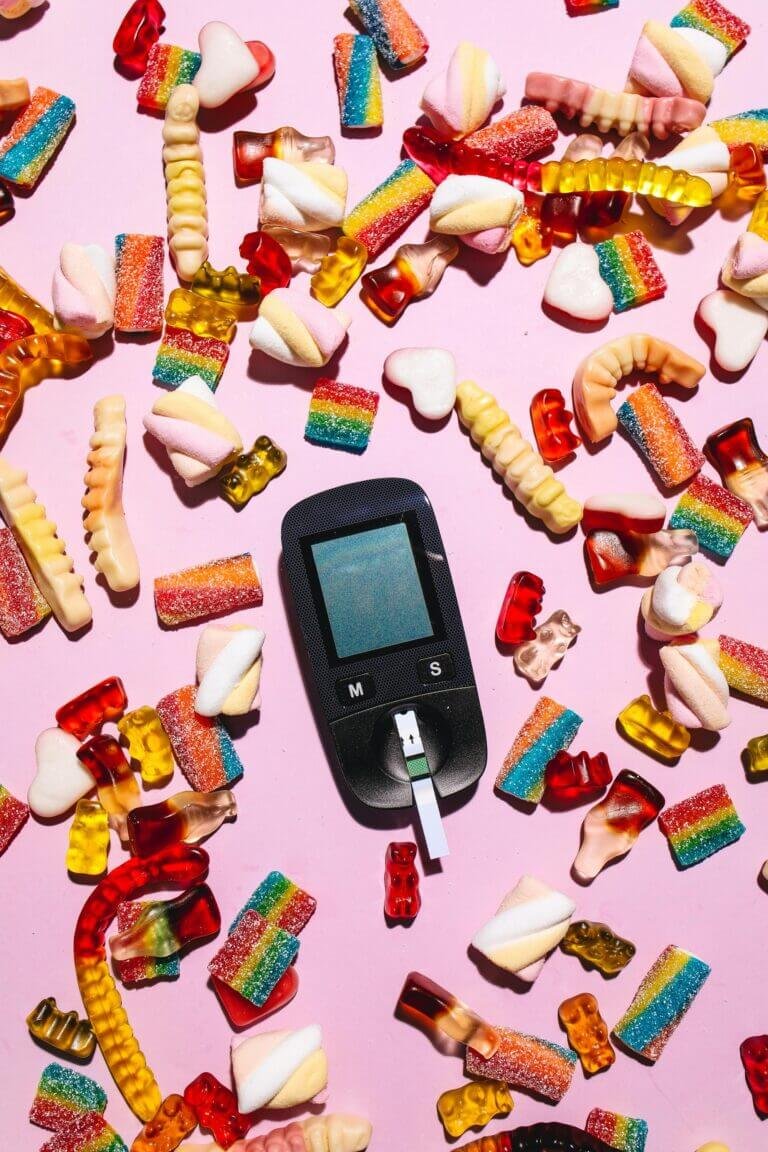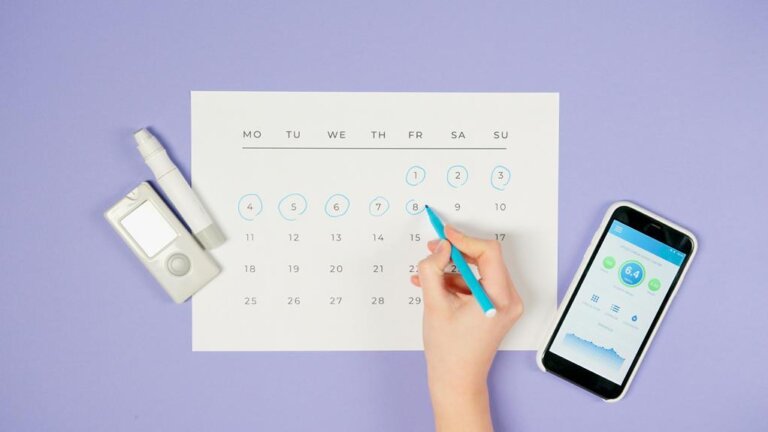Top Technology Tools for Monitoring and Managing Diabetes
Diabetes is a chronic disease that affects millions of people worldwide. It requires constant monitoring and management to maintain optimal health and prevent complications. With the advancements in technology, there are now a variety of tools available to help individuals with diabetes monitor their condition more efficiently and effectively. These top technology tools provide real-time data, personalized insights, and convenient ways to track blood sugar levels, medication, nutrition, and physical activity. In this article, we will explore the latest and most innovative technology tools specifically designed for monitoring and managing diabetes. From continuous glucose monitors to smart insulin pens, these tools are revolutionizing the way individuals with diabetes can take control of their health and improve their quality of life. Additionally, we will discuss their features, benefits, and how they can be integrated into daily diabetes management routines. Whether you are newly diagnosed or have been living with diabetes for years, these top technology tools can make a significant impact on your overall well-being. So, let’s dive into the world of technology and discover the best tools to help you on your journey with diabetes.

Continuous glucose monitoring systems
One of the most significant advancements in diabetes management technology is the development of continuous glucose monitoring systems. These innovative devices provide individuals with real-time data on their blood glucose levels, allowing for more precise and timely adjustments to insulin dosages, diet, and physical activity. Continuous glucose monitoring systems consist of a small sensor inserted under the skin that continuously measures glucose levels in interstitial fluid. The sensor wirelessly transmits this information to a receiver or smartphone application, providing users with comprehensive insights into their glucose trends throughout the day. This technology not only offers greater convenience and ease of use for individuals with diabetes but also helps in achieving better glycemic control and reducing the risk of dangerous fluctuations in blood sugar levels. With continuous glucose monitoring systems, individuals can proactively manage their diabetes, leading to improved overall health and quality of life.
Insulin pumps for precise dosing
Another indispensable technology tool in diabetes management is the use of insulin pumps for precise dosing. Insulin pumps are small, portable devices that deliver a continuous supply of insulin to individuals with diabetes. Unlike traditional insulin injections, which may require multiple injections throughout the day, insulin pumps provide a steady and customizable flow of insulin, mimicking the natural insulin release of the pancreas. This precise dosing allows for better control over blood glucose levels, reducing the risk of highs and lows. Insulin pumps also offer the flexibility to adjust insulin delivery based on factors such as physical activity, meals, and individual insulin sensitivity. With the ability to fine-tune insulin dosages, individuals can optimize their glycemic control and improve overall diabetes management. Insulin pumps serve as an effective and convenient tool for those seeking greater control and stability in their diabetes care.for more articles on diabetes click here
Smart insulin pens for convenience
In addition to insulin pumps, another innovative technology tool that has transformed diabetes management is the use of smart insulin pens. These pens are designed to provide individuals with a convenient and user-friendly way to administer insulin. Unlike traditional insulin pens, smart insulin pens are equipped with advanced features such as dose memory, dose calculators, and Bluetooth connectivity. This allows users to easily track their insulin doses, monitor their injection history, and even sync the data with smartphone applications or cloud-based platforms for further analysis. The convenience of smart insulin pens lies in their portability and discreetness, making it easier for individuals to manage their insulin needs on the go. With the ability to accurately measure and record insulin doses, these smart pens not only simplify the process of insulin administration but also improve medication adherence and overall diabetes control. For individuals seeking a seamless and convenient way to manage their insulin therapy, smart insulin pens offer a valuable solution in the arsenal of technology tools for monitoring and managing diabetes.
Glucose tracking apps for accuracy
Glucose tracking apps have become an increasingly popular tool for individuals managing diabetes, offering a convenient and efficient way to monitor blood sugar levels. These apps utilize various methods such as continuous glucose monitoring (CGM) systems or manual input of glucose readings to provide real-time data and analysis. However, it is essential to consider the accuracy of these apps when relying on them for diabetes management. While many apps claim to provide precise glucose readings, there can be discrepancies between the app’s results and a traditional blood glucose meter. Factors such as device calibration, user error, or technical limitations can impact the accuracy of these apps. Therefore, it is important for individuals to consult with healthcare professionals and validate the accuracy of the app before solely relying on it for making critical treatment decisions. By ensuring the accuracy of glucose tracking apps, individuals can effectively utilize these technological tools as part of a comprehensive diabetes management plan.
Telemedicine for remote care
Telemedicine has emerged as a valuable tool for remote care in the management of diabetes. With the advancements in technology, individuals with diabetes can now consult with healthcare professionals and receive personalized guidance without the need for in-person visits. Through telemedicine platforms, patients can have virtual appointments with endocrinologists, diabetes educators, and nutritionists, allowing for timely and convenient access to expert advice. Telemedicine also enables remote monitoring of blood glucose levels, allowing healthcare providers to assess and adjust treatment plans as needed. This not only improves the convenience for patients but also enhances overall diabetes management by ensuring regular communication and support from healthcare professionals, regardless of geographical location.
Electronic medical record integration
Electronic medical record integration plays a crucial role in the comprehensive management of diabetes. By seamlessly integrating electronic medical records with diabetes monitoring tools, healthcare providers can access and analyze a patient’s complete medical history, including laboratory results, medication lists, and previous treatment plans. This integration facilitates a more holistic approach to diabetes care, allowing for better-informed decisions and personalized treatment strategies. Additionally, electronic medical record integration enables real-time data sharing between healthcare providers, ensuring coordinated care and reducing the risk of medical errors. With this technology, healthcare teams can collaborate efficiently, leading to improved patient outcomes and streamlined diabetes management.
Automated insulin delivery systems
Automated insulin delivery systems have revolutionized the way individuals with diabetes manage their condition. These advanced devices combine insulin pumps with continuous glucose monitors to automatically deliver precise doses of insulin based on real-time glucose levels. By continuously monitoring glucose levels and making adjustments accordingly, automated insulin delivery systems help to maintain optimal blood sugar control and reduce the risk of hypo- and hyperglycemia. Moreover, these systems provide individuals with greater flexibility and convenience in their daily lives, as they no longer need to manually calculate and administer insulin doses. With their ability to seamlessly integrate with various diabetes management apps and platforms, automated insulin delivery systems have become a vital tool in empowering individuals to effectively monitor and manage their diabetes.
Artificial pancreas technology advancements
Recent advancements in artificial pancreas technology have further enhanced the management of diabetes. These innovative systems utilize sophisticated algorithms and sensors to closely mimic the function of a healthy pancreas, automatically adjusting insulin delivery based on real-time glucose levels. By continuously monitoring and responding to changes in blood sugar levels, artificial pancreas technology offers a more personalized and precise approach to insulin therapy. This not only helps individuals achieve better glycemic control but also reduces the burden of constant monitoring and decision-making. With ongoing research and development, artificial pancreas technology continues to evolve, providing hope for improved outcomes and quality of life for individuals living with diabetes.
In conclusion, technology has revolutionized the way we manage and monitor diabetes, making it easier and more efficient for both patients and healthcare professionals. With the wide range of tools available, individuals with diabetes can better track their blood sugar levels, medication intake, and physical activity, leading to improved health outcomes. As technology continues to advance, we can expect even more innovative solutions to help those living with diabetes lead healthier lives. It is important for individuals to work closely with their healthcare team to determine the best technology tools for their specific needs and to ensure proper management of their condition. With technology as a valuable ally, managing diabetes can become a more manageable and empowering experience.
FAQ
What are the top technology tools available for monitoring blood sugar levels in diabetes patients?
Continuous Glucose Monitoring (CGM) systems like Dexcom G6, FreeStyle Libre, and Medtronic Guardian Connect are top technology tools for monitoring blood sugar levels in diabetes patients. These devices provide real-time glucose readings, trends, and alerts to help patients better manage their condition and make informed decisions about their diet, medication, and lifestyle choices. They offer convenience, accuracy, and the ability to track glucose levels continuously, reducing the need for frequent fingerstick tests and providing valuable insights for both patients and healthcare providers.
How do continuous glucose monitors (CGMs) differ from traditional blood glucose meters in managing diabetes?
Continuous glucose monitors (CGMs) differ from traditional blood glucose meters in that they provide real-time glucose readings throughout the day, allowing for better tracking of trends and patterns in blood sugar levels. CGMs also alert users to high or low glucose levels continuously, whereas traditional meters require manual blood sugar checks multiple times a day. This continuous monitoring with CGMs can provide more comprehensive data for diabetes management and help individuals make more informed decisions regarding their diet, exercise, and insulin dosing.
Can insulin pumps be considered an effective technology tool for managing diabetes, and how do they work?
Insulin pumps are an effective technology tool for managing diabetes as they deliver a continuous supply of insulin, mimicking the function of a healthy pancreas. The pump is programmed to release insulin throughout the day, and users can adjust dosages as needed. This helps maintain stable blood sugar levels and reduces the risk of complications. Insulin pumps work by using a small needle inserted under the skin to deliver insulin directly into the body, providing a more accurate and convenient method of insulin delivery compared to traditional injections.
What role do smartphone apps play in monitoring and managing diabetes, and which ones are recommended for patients?
Smartphone apps are crucial in monitoring blood sugar levels, tracking food intake, exercise, and medication adherence for diabetes management. Some recommended apps include MySugr, Glucose Buddy, and BlueLoop. These apps help patients stay organized, set reminders, analyze trends, and share data with healthcare providers for better management of their condition. Overall, smartphone apps play a significant role in empowering patients to take control of their diabetes and improve their overall health.
How do wearable devices like fitness trackers and smartwatches assist in tracking physical activity and managing diabetes?
Wearable devices like fitness trackers and smartwatches assist in tracking physical activity and managing diabetes by monitoring metrics such as steps taken, heart rate, calories burned, and sleep patterns. This data helps individuals set and track fitness goals, maintain an active lifestyle, and make informed decisions about their health. For diabetics, these devices can also provide real-time glucose monitoring, medication reminders, and activity tracking to help manage blood sugar levels effectively. Overall, wearable devices serve as valuable tools for promoting physical activity, monitoring health metrics, and supporting diabetes management.





